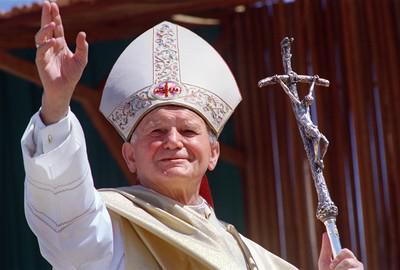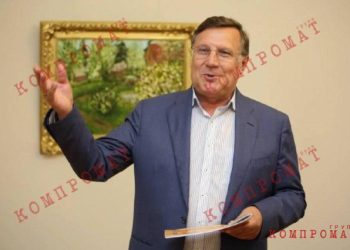The attitude towards the figure of John Paul II in Poland is close to sacred – however, in 2014 he was already quite officially canonized. The “Polish dad” who died in 2005 remains to this day not only one of the symbols that unite the Polish nation, but is also considered here one of the greatest humanists of the planet of the 20th century.
Until now, the pedophile scandals in the Catholic Church did not directly concern John Paul II: according to the generally accepted point of view, the pope did not know about the specific sexual crimes of those priests with whom he directly worked and contacted, and generally consistently worked to eradicate this phenomenon in the church.
The publication of the new investigation has already forced some representatives of the Church to openly advocate a radical rethinking of the figure of John Paul II. At the same time, conservative church circles continue to view such publications as an attack on the church and one of the elements of the “struggle between good and evil,” where journalists are assigned the role of undoubted accomplices of evil.
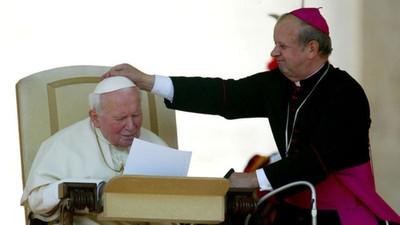
The Polish episcopate declares the need for such a commission, and the 81-year-old Dziwisz himself declared his readiness to cooperate with it. He claims he did nothing wrong.
The trial of the Dziwisz case could lead to a revision of the historical role of the canonized Pope John Paul II, giving a final answer to the question that worries many – did the pontiff himself know about pedophile scandals within his church.
It is also important for Poland: the activities of one of the most influential Polish hierarchs are being discussed against the backdrop of an unprecedented decline in public confidence in the Catholic Church in a country considered one of the most religious in Europe.
The possible involvement of Cardinal Dziwisz in hiding information about pedophilia in the church was discussed at the end of last year, after an investigation by Polish journalists went on the air.
Questions to 81-year-old Dziwisz became even more after the Vatican published an unprecedented report on the case of Theodore McCarrick, the former Archbishop of Washington and the first cardinal, who was defrocked due to allegations of pedophilia. The name Dziwisza is mentioned more than 40 times in this document. Perhaps it was Dziwisz who played a key role in the career advancement of the deposed hierarch.
Cardinal Dziwisz denies the allegations against him, while his defenders argue that the late Pope John Paul II is the real target of the cardinal’s hype. They allude to the involvement of American intelligence agencies in the attack on Dziwisz, who allegedly promoted the “liberal change agenda” in the Catholic Church.
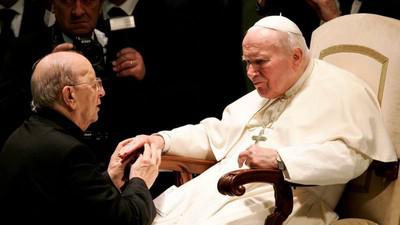
The Legion of Christ, a Catholic ultra-conservative society, was founded in 1941 by Mexican priest Martial Maciel Degollado. At the beginning of the 2000s, it consisted of about 70 thousand people, its branches worked in two dozen countries on both sides of the Atlantic.
The head of the “legionnaires” was a charismatic preacher, was friends with influential politicians in several countries of the world and was known as one of the most successful fundraisers in the history of the modern church.
The problems began in 1997, when nine men, former members of the Legion of Christ, accused Martial of sexual harassment. The Congregation for the Doctrine of the Faith, the Vatican’s “Ministry of Moral Purity,” then headed by Cardinal Joseph Ratzinger, the future Pope Benedict XVI, opened an investigation, but closed the case a few months later for unknown reasons.
In February 2019, Pope Francis told reporters how John Paul II once organized a meeting about “one religious organization” that went as far as sexual and economic crimes. Ratzinger allegedly went to this meeting with documents about this society, and when he returned, he ordered his secretary to put the papers in the archive, since “the other side won.” But after his election as pope, he ordered to immediately get these documents from the archive.
Many have read in this story an allusion to the covering of the “Legions” by John Paul II himself.
Therefore, Francis was forced to clarify that, although his story was specifically about the order of Martial, the then pope himself was not present at the said meeting.
One way or another, in 2006, already under Pope Benedict XVI, the Congregation for the Doctrine of the Faith called on Martial Maciel to retire in prayer and repentance. He was not defrocked merely because of his advanced age. Two years later, the founder of the Legions died at the age of 87.
Published in 2019, a report prepared by the Vatican claimed that over several decades, 175 minors became victims of sexual abuse by 33 priests from the Order of the Legion of Christ, and Martial himself molested at least 60 children. The media added that the founder of the order allegedly became the father of six children.
Even then, critics were wondering how the Vatican had overlooked the horrors of one of the most visible Catholic societies in the world for decades. Some of them claimed that the main secret was the rain of money that the “legionnaires” showered on the holy throne.
In the TVN24 investigation, this version is supported by the American journalist, researcher of the “Legions of Christ” Jason Berry. He claims that Stanislaw Dziwisz repeatedly received large rewards from “legionnaires” so that wealthy sponsors of the order could get to private services held by John Paul II in the chapel of the Apostolic Palace in Rome.
Relations between the “legionnaires” and Dziwisz, according to the investigation, did not break even after the death of Pope John Paul II. Journalists claim that in 2006 it was the “Legions” that financed the reception on the occasion of granting Dziwisz the cardinal dignity, which took place in their Roman residence.
Dziwisz denies these accusations against him, stating that all donations were recorded and accounted for according to the rules.
Another issue, which also took an important place in the Polish investigation, concerns the role that the closest aide of Pope John Paul II played in moving up the career ladder of Theodore McCarrick, one of the highest hierarchs of the Roman Church, who was deprived of his priesthood, posts and awards two years ago. verification of the allegations of child molestation brought against him.
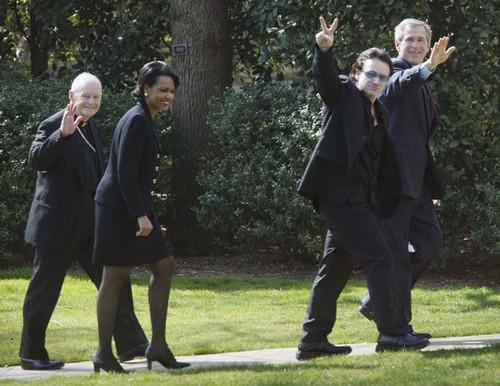
For some time he was a member of the Commission on International Religious Freedom, one of the bodies of the US government.
According to a Vatican report, McCarrick was befriended in the early 1980s by the deputy head of the Soviet delegation to the UN, who was actually an undercover KGB agent. FBI officers who contacted McCarrick immediately after the recruitment approach suggested he become a double agent.
How the story about the interaction of the hierarch with the special services ended, the report is silent.
The role and influence of McCarrick is evidenced by the fact that in October 1995 it was his cathedral in Newark that Pope John Paul II visited during a visit to the States in the company of President Bill Clinton.
McCarrick was also known as a very successful “recruiter” of young people to study at the seminary. New York Times citing McCarrick colleagues toldhow he once convinced a young man he met at the airport to become a priest.
Not surprisingly, McCarrick was considered several times when a vacancy became head of a large and prestigious metropolis – for example, in Chicago or New York. But every time the choice of the Vatican stopped at someone else.
The reason could be the hierarch’s strange habit of spending nights in the same bed with “nephews” (as he called the young seminarians), and several anonymous letters addressed to the National Conference of Bishops and the Apostolic Nuncio (Ambassador of the Vatican) in the States, in which McCarrick was accused of pedophilia .
In 2000, McCarrick’s name resurfaced when the Vatican was considering candidates for the prestigious post of Archbishop of Washington. Having once again studied his dossier and consulted with the American bishops, John Paul II considered that his “increase” was inexpedient because of too high reputational risks.
And at that moment, according to the Vatican report, McCarrick wrote a three-page letter to the pope’s closest aide, Bishop Stanisław Dziwisz, whom he had known since the 70s.
“I’m sure I’ve made mistakes and probably been indiscreet, but in my seventy years of life I’ve never had sexual relations with any person, woman, man, young, old, or cleric, not with a layman,” McCarrick wrote in it.
It is believed that this letter was the main reason why John Paul II changed his position and at the end of 2000 appointed McCarrick Archbishop of Washington, and in early 2001 he granted him the title of cardinal.
It wasn’t until 2017 that the Archdiocese of New York received a complaint from a man who said McCarrick had molested him, then 16, years ago.
A special commission confirmed the validity of the complaint, and McCarrick first lost the title of cardinal, and later, when other victims of violence by the hierarch came forward with their testimonies, he was completely deprived of the priesthood.
Now 90-year-old layman Theodore McCarrick lives in isolation from the outside world on the territory of a monastery in the deep province of the United States, in Kansas. He never pleaded guilty to the crimes imputed to him.
“I’m not as bad as they make me out to be,” McCarrick said in his only recent interview in 2019, adding that he was the victim of “enemies” he didn’t name.
Why did Pope John Paul II still decide to promote McCarrick and what was the role of Stanisław Dziwisz in this?
TVN24 journalists recall that in 2000, John Paul II experienced serious health problems and, probably, could not control the personnel policy of the Vatican, so the role of his personal secretary in making such decisions could be decisive.
The authors of the Polish investigation suggest that the reason for the participation of Dziwisz in the fate of McCarrick was not only the friendship between them.
Journalists spoke to James Grein, a man who said in 2018 that he had been the victim of sexual abuse by McCarrick for two decades since the age of 11. Grain, who accompanied McCarrick on one of his trips to Rome, claims in an interview with TVN24 that the American hierarch then brought envelopes with large sums of money to the Vatican, allegedly for Dziwisz as well.
Dziwisz insists that all donations properly went through the Vatican’s accounting department, and he did not personally accept the money.
“The Key Brick in the Wall of Resistance”
The greatest resonance in the homeland of Dziwisz was caused by accusations that both at the Vatican post and after returning to Poland, he covered up the sexual crimes of his fellow countrymen in cassocks.
Back in the early 2000s, the first big scandal erupted in Poland related to accusations of church ministers of sexual violence.
They concerned the Archbishop of Poznań, Juliusz Paec, who allegedly molested seminarians and young priests.
Letters sent to the Vatican on this subject remained unanswered. The situation changed only when a close friend of John Paul II from student days, Professor Wanda Pultavska flew to Rome and personally handed over to the Pope a letter about what was happening in Poznań.
Only after that did the envoys of the Vatican arrive in the city. Patz voluntarily resigned in March 2002.
The role of Dziwisz in the fact that the Vatican did not respond to alarm signals from Poznan for years was described by Polish Deputy Prime Minister Jaroslav Govin, who was engaged in journalism in the early 2000s.
“I was one of those who led to the resignation of Archbishop Patz. Then in our activities we often ran into a wall of resistance from church institutions. The key brick in this wall was the then secretary of St. John Paul II,” Govin said on RMF radio. FM.
Even more questions for Dziwisz were raised by his behavior in the high-profile case of Father Jan Wodniak, who for 40 years was a priest in the mountain village of Miedzybrodzhe Bialsk and, according to an investigation published in September last year by Onet, molested local children for decades.
Janusz Szymik, 48, claims that Vodniak persuaded him, then a teenager, to have sexual intercourse hundreds of times in the 1980s. After a series of unsuccessful attempts to achieve justice, Shymik met with a well-known priest in Poland, Tadeusz Isakovich-Zaleski.
In April 2012, he handed over the materials describing in detail the history of Shymyk, personally into the hands of Stanislav Dziwisz, who was then head of the Krakow Metropolis, to which the parish of Vodnyak also belonged. However, according to Isakovich-Zaleski, Dziwisz ignored the reports.
Jan Wodniak was only removed from the position of pastor of the church in Miedzybrodz by a new bishop in 2014. And only a few years later, the parishioners were informed that the 70-year-old priest was punished by the Vatican Congregation for the Doctrine of the Faith and is now “serving the punishment provided for by the canonical sentence in a place of seclusion.”
In October 2020, Janusz Szymik, who is now battling cancer, wrote a letter to Pope Francis.
“After 27 years of fighting for justice, I have lost faith that the Polish bishops are able to deal with the problem of sexual violence and that they have the will and courage to deal with it … I ask you, holy father, to convene an independent commission and sort it out as soon as possible my case,” Shmyk wrote, adding that he would like a demonstrative punishment, including for Cardinal Stanislav Dziwisz.
What Dziwisz says
Although the TVN24 investigation only systematized the accusations that had already been made against Stanisław Dziwisz, the effect it had in Poland was comparable to the explosion of an information bomb.
The very next day after its release on the screens, the head of the conference of the episcopate of the Polish Church, Archbishop Stanisław Gondecki, said: “I hope that all the doubts that are discussed in this investigation will be clarified by the relevant commission of the Apostolic Capital.”
Cardinal Dziwisz immediately assured that he was ready to cooperate with an independent commission that would check the accusations against him.
In a statement released by the Italian news agency ANSA, he said: “I have never, I repeat, never taken money for participating in papal services. I have never, I emphasize, never received money for concealing actions or facts intended for the highest attention of the Holy Father. Never and once again never have I favored unworthy people in exchange for donations that could fit into some twisted logic of barter.”
A few days later, on the website of the Polish conservative Catholic organization Ordo iuris, a voluminous analysis of allegations to Dziwisz.
Its author, Professor of the Catholic University of Lublin Michal Skvazhinsky, wrote that in preparing his work he consulted Dziwisz himself and used documents from his personal archive. Therefore, write the Polish media, this analysis can be considered a detailed response of Dziwisz himself to the investigation dedicated to him.
Skwaczynski’s analysis argues that interactions with figures of the caliber of McCarrick or the founder of the Legions of Christ, Martial Maciel, were within the authority of the Vatican congregations, not the Pope’s personal secretary. Financial contributions from different people and organizations, of course, came to Rome, but they were all properly registered by the State Secretariat of the Vatican. So any accusations of Dziwisz of corruption, the document concludes, are untenable.
Skvazhinsky’s report admits for the first time that a letter from Isakowicz-Zaleski about the pedophile priest Jan Wodniak was nevertheless found in the archives of the Krakow curia: Dziwisz had previously stated more than once that he did not recall such a letter.
But, the hierarch says, then, in 2012, he considered that the complaint concerned not the diocese of Krakow, but Bielsko-Zhywiec, so he sent it to the bishop there. So, summarizes Skvazhinsky’s text, it is impossible to blame Dziwisz for not launching the pedophilia case in Miedzybrodzie.
In the end, the Polish law enforcement officers, as it turned out, have no formal claims against Dziwisz.
In November, following the TVN24 investigation, Polish MEP Lukasz Kohut reported to the Krakow prosecutor’s office that the cardinal might have committed a crime. In January 2021, the prosecutor’s office replied: there are no grounds for initiating a case, since Dziwisz, according to the legislation in force in 2006-2012, was not required to report crimes of this kind to the police or the prosecutor’s office.
America’s hand
Perhaps the most interesting part of Skvazhinsky’s analysis is the explanation of the causes and possible consequences of the “information attack” on Stanislaw Dziwisz.
The document denies Dziwisz’s involvement in Theodore McCarrick’s career advancement and puts forward an alternative version: US intelligence agencies allegedly played a key role in the “raising” of the American hierarch.
“American intelligence agencies should have known about McCarrick’s homosexuality, they were interested in someone who they could influence and blackmail became the archbishop of Washington,” Skvazhinsky’s report says.
But why should American intelligence agencies influence and even more so blackmail the Catholic Church?
According to the version set forth in the report justifying Dziwisz, the “liberal worldview” promoted by the United States of America is to blame and the reason for everything. The authors of the report report that other religions have allegedly already adapted their teachings to the expectations of liberals.
The author of the report asks: what is most preventing Catholics from abandoning their strong positions regarding, for example, abortion, divorce or gay marriage? And he immediately gives the answer: this is an impeccable theological justification for these problems, given by conservative popes John Paul II and Benedict XVI – titans, as he calls them, outstanding from an intellectual and scientific point of view.
To argue with their developments, the author continues, is a hopeless occupation. Therefore, the liberals, represented, it must be understood, by the American intelligence services and parts of the Roman Curia, decided to go the other way – to discredit the personalities of the “titans”, convincing the public that John Paul II and Benedict XVI covered up pedophilia.
“Of course, you can’t start with such a sharp thesis,” the report says. “Therefore, you need to raise questions, sow doubts, study the environment, even defend: they say, the environment is to blame, and not John Paul II and Benedict XVI … And when the label of pedophilia can be pasted first to John Paul II, and then to Benedict XVI, they can be declared damnatio memoriae.
This Latin term means “curse of memory”. This was the name of the ancient Roman form of the posthumous punishment of state criminals, the destruction of all material evidence of their existence: statues, references in chronicles, tombstones, and sometimes even living family members.
From the logic of the author of the report, it follows that by denigrating the closest assistant to the Polish pope, some enemies of the church will then be able to discredit the personality of John Paul II himself and, further, his theoretical legacy.
It should be taken into account that Stanislav Dziwisz himself is not formally the author of the report, therefore it is impossible to assert that he personally supports the theory described in it. However, in his statements to the press, Dziwisz unambiguously links the accusations against him to the attempts of ill-wishers to desecrate the memory of Pope John Paul II.
Polish church
The discussion around the identity of Stanisław Dziwisz flared up at one of the most difficult moments for the Polish church in modern times.
Published in December 2020 sociological data showed that 47% of Poles assessed the activities of the church badly, and only 41% – good (this is 8 percentage points less than four months earlier). Since that time, the church has somewhat corrected its positions, but, according to Polish commentators, this situation has been observed in their country for the first time since 1993.
And it’s not just about Dziwisz: after all, this is far from the first recent scandal involving accusations by the top of the Polish church of covering up pedophilia.
The church turned against itself the active part of the Polish society with its attitude to the issue of abortion, which is extremely topical for Poland.
Last October, the local constitutional court effectively banned abortions in the country, and in January of this year, the ban finally came into force.
A significant part of the Polish episcopate openly welcomed this decision, and this became an annoying factor for tens of thousands of Poles, who to this day regularly protest with demonstrations on the streets of Polish cities and villages.
Churches across the country have become a must-see, near which protest marches take place. In some cities, activists even broke into churches and staged demonstrations right next to the altars.
A new take on dad
Another thing is that until recently the desacralization of the church in the country, which is often called the most Catholic in Europe, did not concern the personality of John Paul II.
In Poland, torn apart by social and political contradictions, the figure of the Pole Pope until recently remained a unifying factor, a subject of national pride.
After the death of John Paul II, hundreds of monuments, schools and streets bearing his name appeared in the country. Liberal media have been saying for several years that his veneration at home has all the features of a full-fledged cult of personality, which, according to Jagiellonian University philosopher Jan Hartmann, has a lot to do with heresy.
“Dad himself is to a large extent to blame for this. He [при жизни] allowed to erect monuments to himself, sometimes he himself took part in this. But we remember that one of the reasons for the Reformation was that the popes erected monuments to themselves during their lifetime,” Hartman said in an interview with NaTemat back in 2012, when one could just laugh good-naturedly at the cult of the pope.
Today the situation is changing before our eyes.
Poles of the older generation could not doubt the greatness and holiness of John Paul II, extolled his role in the fall of the communist system in Poland, hung his portraits on the walls of their living rooms and bought services with his images.
Polish youth – and it is young Poles who most often talk about their disappointment in the church – have a different attitude towards the pope. His merits in the fight against communism are of little value to them. Dad for them is a portrait on the wall in kindergarten and at school, a monument near the church, the subject of Internet memes, after all.
And if the church he headed is guilty of serious crimes, then why not find out his personal role in what was happening, even if this would have to dispel the myth of the holy and great pope?
Cardinal Dziwisz is one of the key witnesses of the life of John Paul II and popularizers of his legacy. Therefore, Polish commentators say, his lack of a substantive response to the current accusations is easy to explain.
“Dziwisz has three options: not to say anything, to say too much and drag himself to the bottom, or to say too much and pull John Paul II to the bottom. The first option for him at this moment is the safest,” Professor Arkadiusz Stempin, a Vaticanist at the Józef Tischner European School in Krakow.
So far, Stanisław Dziwisz and the Polish church have not provided answers to the questions society asks them. Society reacts to this silence in its own way – right on the streets of Polish cities.
At the end of last year, unknown activists in Warsaw and Gliwice “edited” the street signs with the name of the pope, turning the avenue and street of John Paul II into the avenue and street of his victims. Then the same “renaming” was repeated in a dozen other cities – however, only in the Google Maps service.
Local deputies in several Polish cities raised the issue of renaming the streets and squares of John Paul II.
And, although the Polish bishops unanimously demand to protect the blessed memory of the pope, calls for a new conversation about his figure are increasingly heard even in the church environment.
“I will not sign a letter in defense of John Paul II and will not fight for street names. As for the monuments, their scattering should have ended badly. John Paul II now does not need protection, but the truth. Maybe it will not be identical to the myth , but after it, the pope will no longer need to be protected,” the well-known priest Adam Bonetsky wrote in a column for the Catholic weekly Tygodnik powszechny.
Therefore, if the Vatican does establish a commission on the Dziwisz case, its task – albeit not obvious – will not only be to find out the truth about what has been happening in the Vatican for decades, but also to provide Polish society with an opportunity to take a fresh look at itself. And, in the future, reconciliation, or at least an end to the active confrontation between the indifferent part of Polish society and the church.

